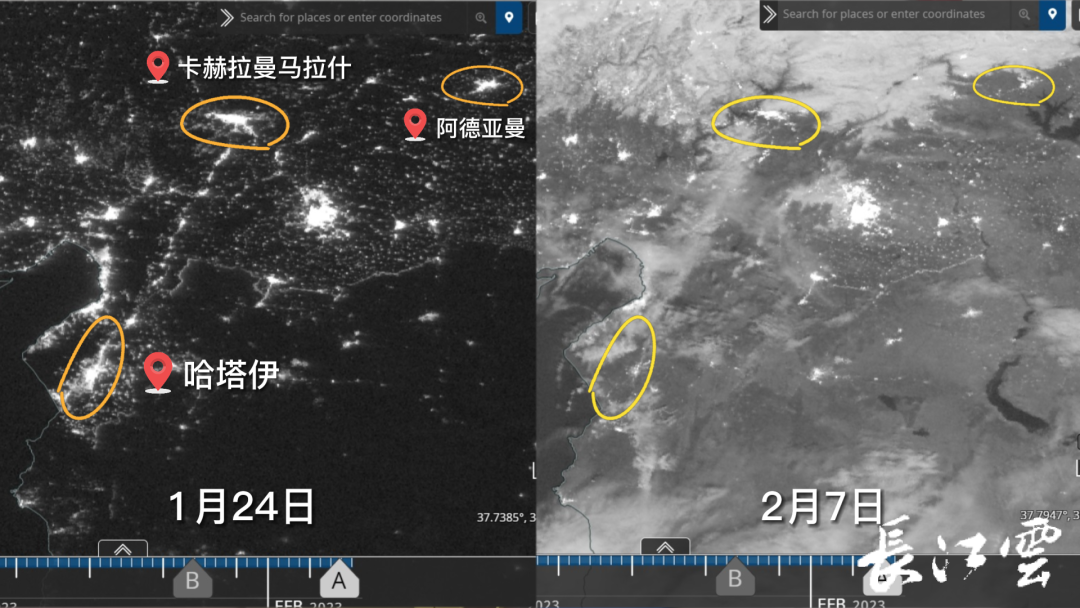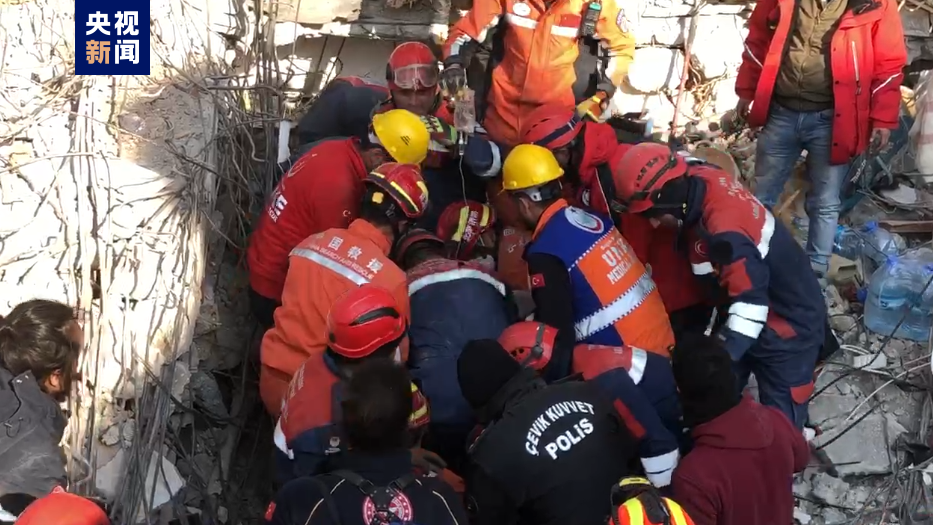Published: February 15, 2023

The United Nations Satellite Centre (UNOSAT) has activated its emergency mapping service in quake-hit areas in Türkiye to aid relief efforts.
A research team from central China’s Wuhan University was invited to map the lights in the areas at night using remote sensing data to help better analyze disaster situations in different areas and allocate relief resources.
Li Xi, a professor at the State Key Laboratory of Information Engineering in Surveying, Mapping and Remote Sensing at Wuhan University, together with his team, provided remote sensing data of the quake-hit areas to UNOSAT.
The initial assessment results, disrupted by rain and snow, show that the lighting reduction ratio is over 90 percent, 50 percent and 70 percent in Hatay, Kahramanmaras and Adiyaman, respectively.
The results indicate that the power and other infrastructure losses in the disaster-stricken areas are serious.
“In the past, it was generally believed that the closer the area was to the epicenter, the greater the loss. In fact, this did not take into account the different disaster resistance capabilities of different areas,” said Li.
The changes in the lights can directly reflect the scale of damage in different cities and can be used to assess disaster resistance capabilities. In the case of resource shortages, it can play an important role in the formulation of more targeted rescue strategies, Li added.

A comparison of lighting between January 24 (L) and February 7 (R) in the earthquake-stricken areas of Hatay, Kahramanmaras and Adiyaman in Türkiye. /Changjiangyun
Generating data via satellites
Li’s team analyzed satellite data, which is updated every day, combining macro and micro observations. They used China’s high-resolution satellites to carry out the high-precision monitoring of lights in affected areas at night.
Earth science satellite SDGSAT-1, developed by the Chinese Academy of Sciences, provided pre-disaster data for researchers to compare with the post-disaster conditions.
In addition, commercial space telescope Yangwang-1, developed by Origin Space Technology Co., Ltd., and micro-nano satellite QMX-1, developed by Wuhan University, have been employed.
Besides observing lights through high-resolution satellites at night, the team also took help from Suomi-NPP, a U.S. meteorological satellite, to obtain data with longer timeframe and broader range, and to analyze the light trends.
The team reported analysis results to UNOSAT, the World Food Program and other agencies. The results could be used to help formulate relief policies and monitor the progress of post-disaster reconstruction.
“The data may help policymakers analyze the disaster situations in different areas and allocate relief resources better,” Li said.
“We’ve been involved since the day after the earthquakes, and we will be tracking and observing the area for the coming months or even years.”

Chinese team rescues a trapped person from the ruins of a collapsed building in Antakya, Türkiye, February 12, 2023. /China Media Group
Team mission
Currently, Li’s team and UNOSAT are collaborating under the pilot initiative “Night-Time Light Remote Sensing for Sustainable Development Goals” from the Group on Earth Observations.
The initiative aims to quantify the progress of several indexes related to the 2030 Sustainable Development Goals using night-time light data.
Since 2012, Li’s team has been engaged in the research field of luminous remote sensing, assessing impact of humanitarian disasters with related data.
Their previous researches in Syria, Yemen and other places have proved that changes in nighttime lights can be used to assess humanitarian disasters efficiently, serving the United Nations Security Council and other agencies for multiple times.
(With input from Xinhua)
 Africa -China Review Africa -China Cooperation and Transformation
Africa -China Review Africa -China Cooperation and Transformation
